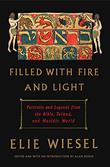IN SUCH GOOD COMPANY
ELEVEN YEARS OF LAUGHTER, MAYHEM, AND FUN IN THE SANDBOX
by Carol Burnett ‧ RELEASE DATE: Sept. 13, 2016
An entertaining if somewhat overly anecdotal look back at a beloved weekly variety series.
The TV legend reflects on her eponymous variety series.
When the Carol Burnett Show premiered on CBS in 1967, it was the heyday for variety shows, which mixed sketch comedy with musical performances and were a staple on network TV. Though several shows from that era enjoyed high ratings for a few seasons, such as Rowan & Martin’s Laugh-In, the Smothers Brothers Comedy Hour, and the Glen Campbell Show, Burnett’s (This Time Together: Laughter and Reflection, 2010, etc.) series remained an audience favorite for an unprecedented 11 years, winning multiple Emmy awards along the way and continuing in syndication ever since. In this light, behind-the-scenes memoir, the author pays tribute to the many talented individuals responsible for the show’s enduring success, including the writers, musicians, designers, technicians, and, perhaps most significantly, her team of weekly performers and big-name celebrity guest stars. She additionally shares some of the hilarious impromptu moments on the set and sheds light on the many memorable sketches, including the movie parodies that have become classic TV. In brief, occasionally disjointed chapters, Burnett provides fascinating glimpses of the vigorous demands involved with producing her show, eventually summarizing why such shows are regretfully no longer produced on the same scale. “Sadly, variety shows like ours have gone the way of the dodo bird,” she writes. “A variety show today can never duplicate what we did. Why? Money. The cost of clearing the songs and music would sink the Titanic. Sixty to seventy costumes a week? No way. A twenty-eight piece orchestra? Twelve dancers? A rep company of five? Six to eight sketches a show? Major guest stars? Block the entire show and rehearse with the orchestra in one day? The following day tape the whole shebang in two hours? Dream on.”
An entertaining if somewhat overly anecdotal look back at a beloved weekly variety series.Pub Date: Sept. 13, 2016
ISBN: 978-1-101-90465-7
Page Count: 320
Publisher: Crown Archetype
Review Posted Online: June 10, 2016
Kirkus Reviews Issue: July 1, 2016
Share your opinion of this book
More by Carol Burnett
-
-
BOOK REVIEW
-
THE 48 LAWS OF POWER
by Robert Greene ‧ RELEASE DATE: Sept. 1, 1998
If the authors are serious, this is a silly, distasteful book. If they are not, it’s a brilliant satire.
The authors have created a sort of anti-Book of Virtues in this encyclopedic compendium of the ways and means of power.
Everyone wants power and everyone is in a constant duplicitous game to gain more power at the expense of others, according to Greene, a screenwriter and former editor at Esquire (Elffers, a book packager, designed the volume, with its attractive marginalia). We live today as courtiers once did in royal courts: we must appear civil while attempting to crush all those around us. This power game can be played well or poorly, and in these 48 laws culled from the history and wisdom of the world’s greatest power players are the rules that must be followed to win. These laws boil down to being as ruthless, selfish, manipulative, and deceitful as possible. Each law, however, gets its own chapter: “Conceal Your Intentions,” “Always Say Less Than Necessary,” “Pose as a Friend, Work as a Spy,” and so on. Each chapter is conveniently broken down into sections on what happened to those who transgressed or observed the particular law, the key elements in this law, and ways to defensively reverse this law when it’s used against you. Quotations in the margins amplify the lesson being taught. While compelling in the way an auto accident might be, the book is simply nonsense. Rules often contradict each other. We are told, for instance, to “be conspicuous at all cost,” then told to “behave like others.” More seriously, Greene never really defines “power,” and he merely asserts, rather than offers evidence for, the Hobbesian world of all against all in which he insists we live. The world may be like this at times, but often it isn’t. To ask why this is so would be a far more useful project.
If the authors are serious, this is a silly, distasteful book. If they are not, it’s a brilliant satire.Pub Date: Sept. 1, 1998
ISBN: 0-670-88146-5
Page Count: 430
Publisher: Viking
Review Posted Online: May 19, 2010
Kirkus Reviews Issue: July 15, 1998
Share your opinion of this book
More About This Book
-
-
BOOK TO SCREEN
-
NIGHT
by Elie Wiesel & translated by Marion Wiesel ‧ RELEASE DATE: Jan. 16, 2006
The author's youthfulness helps to assure the inevitable comparison with the Anne Frank diary although over and above the...
Elie Wiesel spent his early years in a small Transylvanian town as one of four children.
He was the only one of the family to survive what Francois Maurois, in his introduction, calls the "human holocaust" of the persecution of the Jews, which began with the restrictions, the singularization of the yellow star, the enclosure within the ghetto, and went on to the mass deportations to the ovens of Auschwitz and Buchenwald. There are unforgettable and horrifying scenes here in this spare and sombre memoir of this experience of the hanging of a child, of his first farewell with his father who leaves him an inheritance of a knife and a spoon, and of his last goodbye at Buchenwald his father's corpse is already cold let alone the long months of survival under unconscionable conditions.
Pub Date: Jan. 16, 2006
ISBN: 0374500010
Page Count: 120
Publisher: Hill & Wang
Review Posted Online: Oct. 7, 2011
Kirkus Reviews Issue: Jan. 15, 2006
Share your opinion of this book
More by Elie Wiesel
-
-
BOOK REVIEW
by Elie Wiesel ; edited by Alan Rosen
-
-
-
BOOK REVIEW
by Elie Wiesel ; illustrated by Mark Podwal
-
-
-
BOOK REVIEW
by Elie Wiesel ; translated by Marion Wiesel
-
© Copyright 2023 Kirkus Media LLC. All Rights Reserved.
Hey there, book lover.
We’re glad you found a book that interests you!
Please select an existing bookshelf
We can’t wait for you to join Kirkus!
Please sign up to continue.
It’s free and takes less than 10 seconds!
Already have an account? Log in.
OR
Trouble signing in? Retrieve credentials.
Almost there!
Welcome Back!
Sign in using your Kirkus account
OR
Trouble signing in? Retrieve credentials.
Need Help?
Contact us: 1-800-316-9361 or email customercare@kirkus.com
Don’t fret. We’ll find you.










